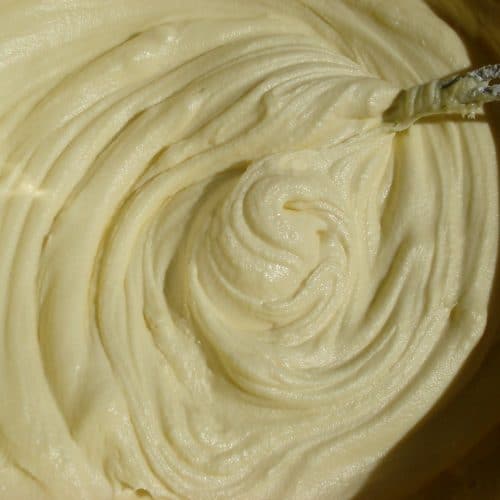Cream cheese turns any meal from plain to exciting right away. Imagine toast without cream cheese—it’s like ice cream missing its cherry on top. Mix it into foods, and flavors pop like fireworks, whether it’s a rich cheesecake or a creamy dip. Cream cheese flies off shelves because it’s the kitchen’s secret weapon everyone wants. Here’s something cool: the best frosting gets its sparkle from cream cheese, giving desserts that unforgettable zing. This quiet hero lifts every dish it touches. Many cooks grab it often since recipes taste flat without its smooth, creamy punch. Want to try new flavors? Jump into recipes that show how cream cheese can surprise the taste buds with each bite. Keep going to unlock tasty secrets that might change how cooking feels forever.
It’s a delicious addition to practically anything from steak to soups.
Moreover, you can even incorporate it into sweets such as smores and cheesecake.
However, keeping cream cheese in the proper storage conditions is vital to prevent it from going sour, moldy, or becoming completely inedible.
So, how long can cream cheese sit out?
Cream cheese should sit out for a maximum of two hours.
Always store it in the refrigerator since harmful bacteria like E. coli thrive best at room temperature.
For that reason, if you want to serve this spreadable cheese later, store it in the fridge.
This article discusses how long cream cheese can sit out in your refrigerator before it goes bad.
It also provides a simple recipe for making cream cheese at home.

Does Cream Cheese Last Long in the Fridge?
The shelf life of unopened cream cheese is two to three weeks past its printed expiration date.
Refrigerated cream cheese lasts up to 10 days once opened.
Keep cream cheese in a dry place and away from moisture when storing it.
Bacteria can grow on the cream cheese surface, causing it to go bad much faster.
Moreover, store cream cheese airtight to extend its shelf life.
Can Cream Cheese be Frozen?
Yes, you can freeze cream cheese.
Freezing the cream cheese makes it more stable and less prone to turning into a lump of butter when heated again.
This prevents it from becoming gummy or sticky after you reheat it.
Even though cream cheese is a dairy product, it doesn’t freeze as quickly as butter or other fats.
That’s because the water content of cream cheese causes it to thicken when refrigerated.
Ice crystals cause cheese curds to become grainy and ricotta-like as they separate from previously emulsified water.
If you want your cream cheese to stay fresh longer, store it in the freezer.
To freeze cream cheese:
- Place in a plastic freezer bag or container and place in the freezer until solidified.
- Once frozen, transfer to a resealable plastic bag or container and return to the freezer until you’re ready to use again.
If you’re freezing cream cheese for a casserole or pound cake, there’s no need to worry about the texture.
However, frozen cream cheese can become grainy, making it unsuitable for rolling into balls or spreading on bagel sandwiches.
Store cream cheese in a warm, dry place to remain stable in texture.
This way, you can use it in recipes requiring a soft, spreadable consistency.
Can You Store Cream Cheese in the Freezer for a Long Time?
You can store cream cheese in the freezer for up to two months.
Just leave the package unopened and let it defrost at room temperature.
Don’t thaw the cream cheese before you use it to preserve freshness.
Plan ahead if you only use cream cheese for baking and own a deep freezing freezer.
Cheese freezes much better at a slightly warmer temperature.
The cream cheese will stay fresh in your freezer for several months if kept at 38 to 40 degrees Fahrenheit (below freezing).
On the other hand, cream cheese will last two to three months if you store it between 41 and 45 degrees Fahrenheit (above freezing).
Put cream cheese in a plastic bag and place it between two containers filled with crushed ice, such as ice cream tubs.
Then, freeze it.
This will prevent the air from reaching the cream cheese.
However, if it’s too cold, the cheese loses its freshness and begins to look gray.
Therefore, label your cream cheese with the date you put the top on.
Moreover, take the cheese out of the refrigerator for at least 6 hours before using it.

How Can Cream Cheese Be Softened After Refrigeration?
Softening cream cheese after refrigeration is challenging, but it doesn’t have to be.
Here are some quick and easy ways to soften up your cream cheese so it’ll stay soft and pliable:
Warm Water
You don’t need a lot of hot water; it should be just enough to cover the top of the jar or container.
Just let it sit at room temperature until you see that the top layer has started lifting off the rest of the lid.
This can take anywhere from 30 minutes to an hour or more, so be patient.
Microwave
Another way to soften cream cheese is with the microwave.
Place the bowl of cream cheese into a microwave oven for about 10 seconds or until the cream cheese gets soft.
Avoid overheating the cream cheese, or you may melt some of it.
Countertop
You don’t need anything fancy here.
Just place your bowl of cold cream cheese on your countertop for about two minutes.
Don’t leave it unattended.
In case the surface isn’t warm enough to melt the entire contents evenly and quickly, repeat this step.
Place the cream cheese on your countertop for a minute or two until it melts.
Can You Save Cream Cheese That has been Out Too Long?
You can, but it depends on how long the cream cheese has been out.
Pop the cream cheese back into the fridge if it’s been out for less than two hours.
Then, let it sit there for a few more days.
If your cream cheese has been out of the fridge for more than two hours, discard it.
Such cream cheese isn’t safe to consume.
What Are the Signs of Bad Cream Cheese?
Many recipes call for cream cheese, but keeping it fresh is a real challenge.
A few tell-tale signs can help you determine whether your cream cheese is bad and needs to be tossed out.
Smell: You can tell that your cream cheese is still fresh if there is no foul odor. Spoiled cream cheese will have a strong ammonia-like scent and may even start to smell like rancid butter. This should alert you that the cheese is no longer fresh and should be tossed immediately.
Taste – Cream cheese will have a rancid taste when it’s not fresh. Such cream cheese is not likely to taste good when spread on toast in the morning or quiches. Therefore, throw it away to avoid getting sick.
Consistency – Check out the consistency of your cream cheese. Is it creamy like pudding or firm like butter? If so, then it’s probably still good. However, if the cream cheese is too soft, you should throw it out immediately.
Appearance – Your cream cheese should be bright white, with no discoloration. If there’s any color on the surface, or if you see mold growing, toss it. Moreover, discard cream cheese if it’s too hard or dry and crumbly.
When You Eat Cream Cheese That Has Been Left Out, What Happens?
Cream cheese that has been left out for too long can harm your health.
For instance, you could experience some stomach pain or discomfort.
When dairy products are not properly refrigerated, they tend to cause stomach problems such as gastroparesis.
Symptoms usually worsen if bacteria are still present in your body and you don’t get medication.
The bacteria in the cream cheese can cause an infection if your immune system isn’t strong enough to fight it off on its own.
So, what should be done to a piece of cream cheese that has been sitting out for a while?
- Throw it away immediately. Leaving food out can cause bacteria to grow on your kitchen countertops and other surfaces. Over time, the bacteria in cream cheese can multiply rapidly and spread throughout your kitchen if left out on the counter.
- Ensure you wash your hands thoroughly with soap and warm water before eating anything else or touching your face or mouth. You can also use an alcohol-based hand sanitizer.
- Call your doctor if you develop diarrhea or stomach pain after eating the cream cheese.
How to Make Cream Cheese
Most store-bought cream cheeses are often made with preservatives and other additives that can ruin the taste and texture of your food.
Cream cheese can be made to your specifications by controlling all process aspects.
Here are five simple steps to making homemade cream cheese:
Ingredients:
- Whole milk (full milk), 4 cups (32 ounces/1000 ml)
- Lemon juice, 2 to 3 teaspoons
- Salt, 1/4 to 1/2 teaspoon
Instructions
- Heat the milk on medium-high in a heavy-bottomed saucepan. As it simmers, constantly stir until a rolling boil is reached.
- Turn the heat down to medium.
- Add one tablespoon of lemon juice every one minute. Keep stirring constantly.
- Cook the mixture until it curdles.
- The mixture should separate within a few minutes of constant stirring. It will have thick curdles and a green liquid at the bottom. Then remove it from the heat.
- In a large bowl, place a cheesecloth-lined sieve. Using a sieve, strain and cool the curd mixture for about 15 minutes.
- Process curds until smooth and creamy in a food processor. Three to four minutes should be enough. If your cream cheese is grainy, keep going.
- Add salt to taste. You can add more salt to enhance the flavor.
- Spice it up with herbs, garlic, or anything else you like.
- Store cream cheese in the refrigerator. Typically, you can use this cream cheese for seven days, but it can last two weeks.
Final Word
As a general rule of thumb, always keep cream cheese in the fridge until it’s time to serve.
Moreover, discard cream cheese stored at room temperature for over two hours to prevent harmful bacteria from growing.
That way, you don’t run the risk of getting sick.

Cream Cheese
Equipment
- 1 freezer
Ingredients
- 4 cup Whole milk
- 2 teaspoons Lemon juice
- 1/2 teaspoons Salt
Instructions
- Heat the milk on medium-high in a heavy-bottomed saucepan. As it simmers, constantly stir until a rolling boil is reached.
- Turn the heat down to medium.
- Add one tablespoon of lemon juice every one minute. Keep stirring constantly.
- Cook the mixture until it curdles.
- The mixture should separate within a few minutes of constant stirring. It will have thick curdles and a green liquid at the bottom. Then remove it from the heat.
- In a large bowl, place a cheesecloth-lined sieve. Using a sieve, strain and cool the curd mixture for about 15 minutes.
- Process curds until smooth and creamy in a food processor. Three to four minutes should be enough. If your cream cheese is grainy, keep going.
- Add salt to taste. You can add more salt to enhance the flavor.
- Spice it up with herbs, garlic, or anything else you like.
- Store cream cheese in the refrigerator. Typically, you can use this cream cheese for seven days, but it can last two weeks.
Video
Nutrition
- 25 Homemade Sour Cream Recipes - November 3, 2025
- 25 Simple Lemon Dessert Recipes - November 3, 2025
- 25 Best Jello Recipes - November 3, 2025